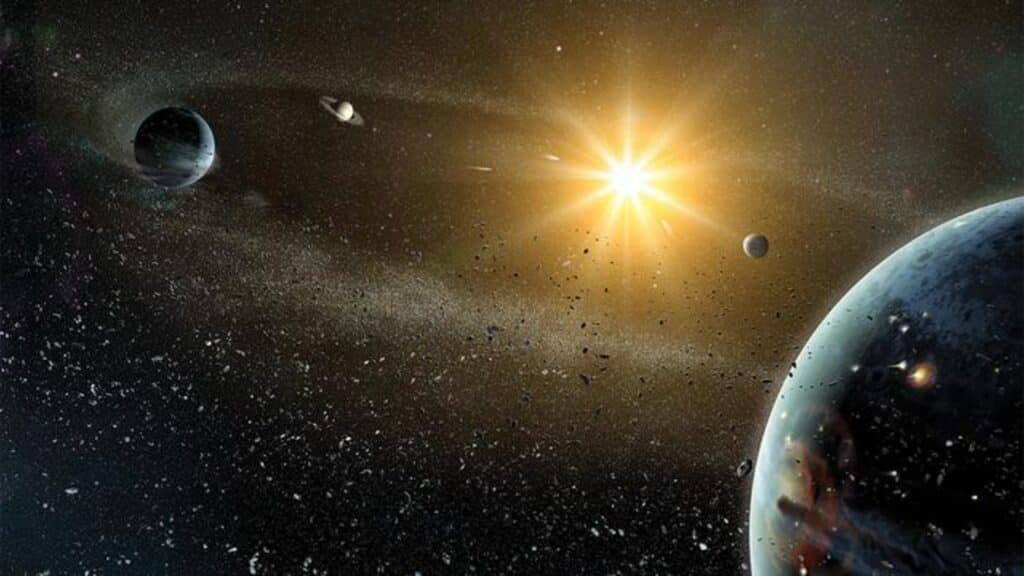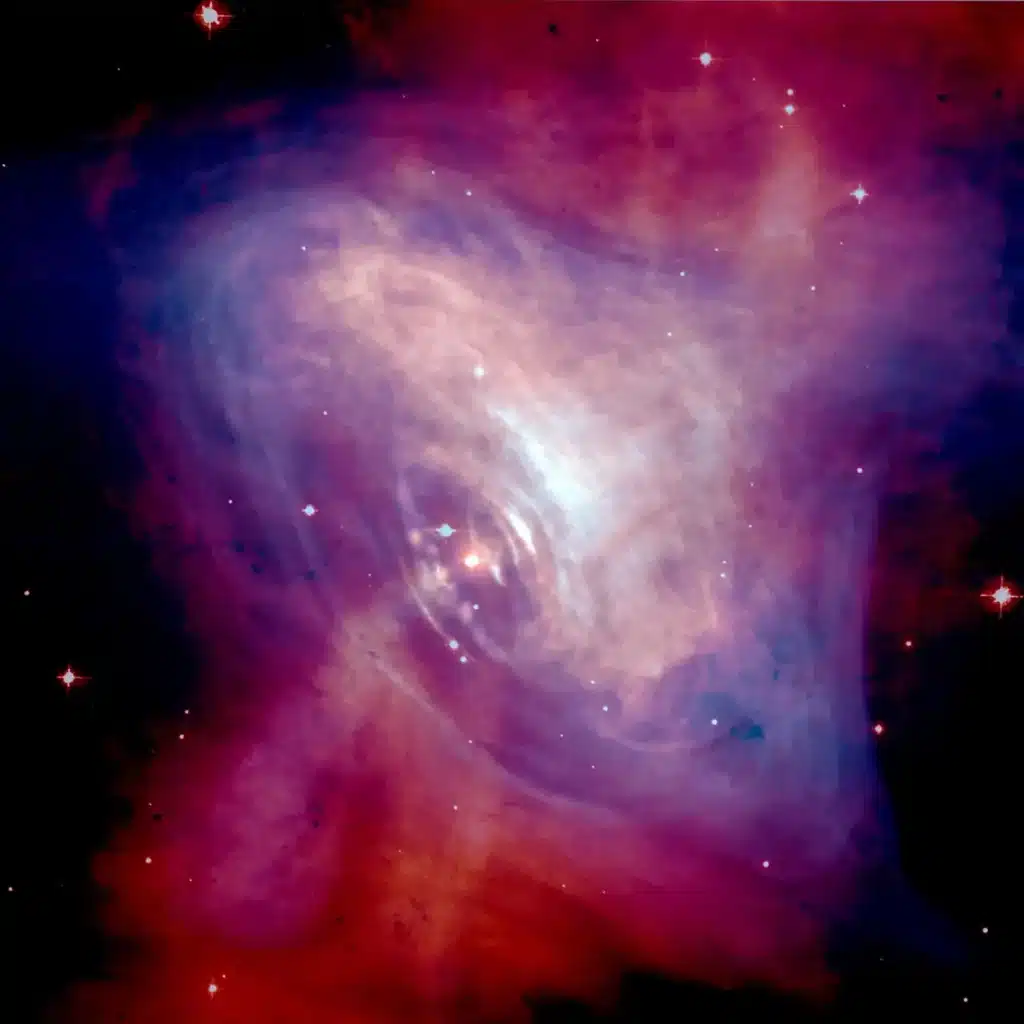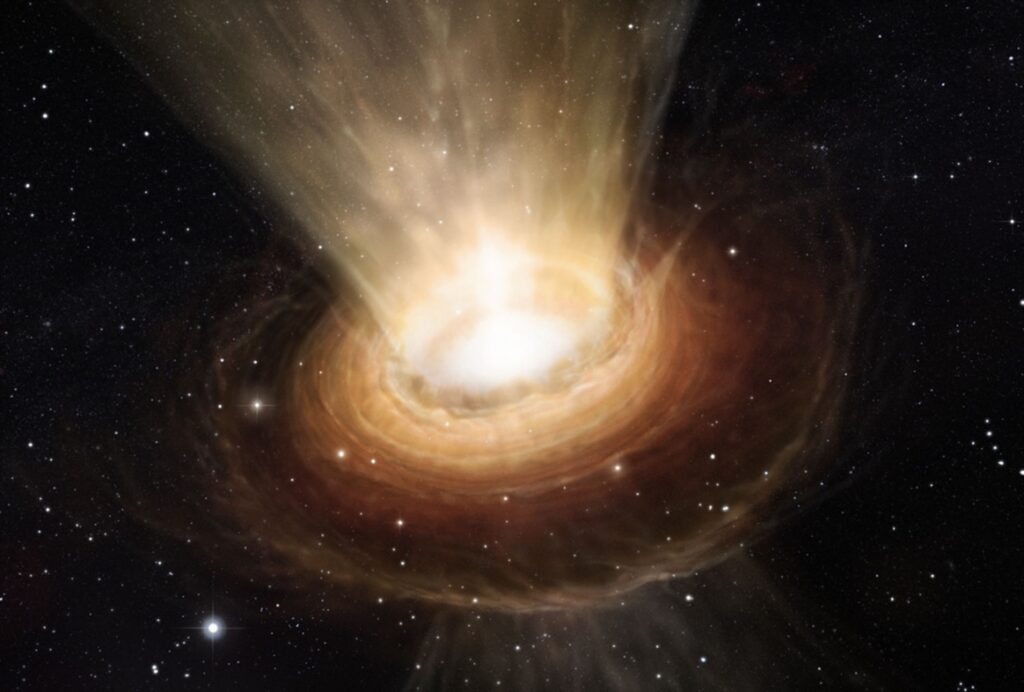How did our solar system form? A new study is shedding light on how the process played out. Using NASA’s James Webb Space Telescope (JWST), University of Arizona scientists have captured the process of a young planetary system actively dispersing its gas into space.
The findings, published in the Astronomical Journal, are offering new insights into the lifecycle of planetary systems, including our own solar system.

Our solar system, home to rocky planets such as Earth and gas giants like Jupiter, originated from a dense disk of gas and dust surrounding the young Sun. Scientists have long pondered over how these disks, initially rich in gas, evolve to form the diverse planetary bodies we observe today. The JWST is providing a crucial piece of this cosmic puzzle.
“Knowing when the gas disperses is important as it gives us a better idea of how much time gaseous planets have to consume the gas from their surroundings,” says study lead author Naman Bajaj, a second-year doctoral student at the University of Arizona’s Lunar and Planetary Laboratory, in a media release. “With unprecedented glimpses into these disks surrounding young stars, the birthplaces of planets, JWST helps us uncover how planets form.”
At the heart of their study is the observation of a young star named T Cha, enveloped by a circumstellar disk in the throes of gas dispersion. This disk, a swirling cloud of gas and dust, is the stage where the drama of planetary formation unfolds. Particles within the disk gradually clump together to form larger bodies, eventually leading to the birth of planets.
Using JWST, the team was able to image the wind of gas as it escaped the disk for the first time. This was achieved by detecting light emitted through ionization, a process where atoms lose electrons due to high-energy radiation. Specifically, they observed light from ionized neon and argon gases, acting as markers for tracing the disk’s gas dispersal.
“The neon signature in our images tells us that the disk wind is coming from an extended region away from the disk,” explains Bajaj. “These winds could be driven either by high-energy photons — essentially the light streaming from the star — or by the magnetic field that weaves through the planet-forming disk.”
Further simulations led by Andrew Sellek, a postdoctoral researcher at Leiden University in the Netherlands, supported the theory that stellar photons, or light from the star, could indeed drive this dispersal. Their findings indicate that the T Cha disk loses gas at a rate comparable to the mass of Earth’s moon each year.
This research builds upon previous discoveries by Ilaria Pascucci, a professor at the Lunar and Planetary Laboratory and a pioneer in using neon emissions to trace disk winds.

“Our discovery of spatially resolved neon emission — and the first detection of double ionized argon — using the James Webb Space Telescope could become the next step towards transforming our understanding of how gas clears out of a planet-forming disk,” notes Pascucci, principal investigator and study co-author. “These insights will help us get a better idea of the history and impact on our own solar system.”
The team also observed that the inner disk of T Cha is changing on remarkably short timescales, suggesting rapid evolutionary processes at work.
“Along with the other studies, this also hints that the disk of T Cha is at the end of its evolution,” concludes study co-author Chengyan Xie, a second-year doctoral student at the Lunar and Planetary Laboratory who led the in-progress work. “We might be able to witness the dispersal of all the dust mass in T Cha’s inner disk within our lifetime.”












